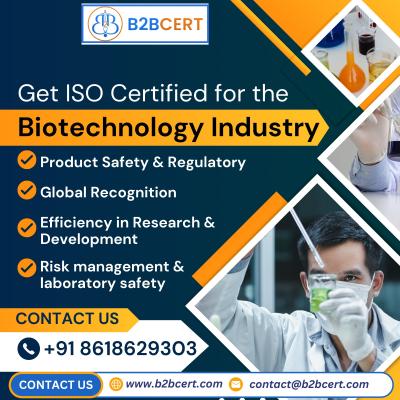How Does the Certification Audit Process Work, and What Are Its
-
Achieving an ISO certification is a major milestone for any organization seeking to demonstrate its commitment to quality, safety, environmental responsibility, or information security. However, before proudly displaying that certificate, an organization must successfully navigate the certification audit process.
If you’re planning to get ISO Certification in Dubai, understanding the audit process can help you prepare better, avoid surprises, and ensure a smoother path toward compliance. Let’s explore how the certification audit works, what its stages are, and how expert ISO Consultants in Dubai can support you through every step.
What is a Certification Audit?
A certification audit is an independent evaluation conducted by an accredited certification body to verify that your organization’s management system meets the requirements of a specific ISO standard—be it ISO 9001 for Quality Management, ISO 14001 for Environmental Management, ISO 27001 for Information Security, or others.
These audits are carried out by qualified auditors who review your documentation, processes, and records to ensure compliance. Once your organization passes the audit, you are awarded an ISO certificate, which is typically valid for three years, subject to surveillance audits.
Stages of the Certification Audit Process
The certification audit is typically conducted in two main stages, preceded by preparation and followed by ongoing maintenance. Here’s a breakdown of the process:
1. Preparation Stage
Before the certification body arrives, your organization needs to ensure that the management system is in place and functioning effectively. This involves:
-
Gap Analysis – Assessing your current processes against ISO requirements to identify areas for improvement.
-
Documentation Development – Creating policies, procedures, and records as per the chosen ISO standard.
-
Training and Awareness – Ensuring employees understand the standard’s requirements and their roles.
-
Internal Audits – Conducting internal reviews to detect and correct nonconformities before the external audit.
-
Management Review – Top management evaluates the system’s performance and approves necessary improvements.
Many organizations partner with ISO Consultants in Dubai during this stage to receive professional guidance, templates, and training, making the process much smoother.
2. Stage 1 Audit – Documentation and Readiness Review
The Stage 1 audit is essentially a readiness assessment. The auditors:
-
Review your documented management system to ensure it aligns with ISO requirements.
-
Check whether mandatory documents and records are in place.
-
Assess if your organization is ready to move to the Stage 2 audit.
-
Identify any gaps or nonconformities that must be addressed before the final audit.
This stage is more about preparation than judgment—it gives you an opportunity to make final adjustments before the in-depth evaluation.
3. Stage 2 Audit – Certification Assessment
Stage 2 is the main certification audit. Here, the auditors:
-
Observe processes in real time to ensure they meet the documented procedures and ISO requirements.
-
Interview employees to assess their understanding and compliance.
-
Review records to confirm that processes have been implemented effectively over time.
-
Check that your organization addresses risks, opportunities, and continual improvement.
If the auditors find nonconformities, they will categorize them as major or minor:
-
Major nonconformities must be corrected before certification can be granted.
-
Minor nonconformities require corrective actions but may not delay certification if addressed promptly.
When you meet the requirements, the certification body recommends you for ISO certification.
4. Certification Decision and Issuance
After Stage 2, the auditors submit a detailed report to the certification body’s decision panel. If the panel agrees that your organization meets the standard’s requirements:
-
The ISO certificate is issued, typically valid for three years.
-
You can now publicly promote your achievement to clients, partners, and stakeholders.
5. Surveillance Audits
Certification is not a one-time event. Surveillance audits are conducted annually to ensure your organization continues to comply with ISO standards. These audits are generally less extensive than the initial certification audit but still thorough enough to confirm ongoing adherence.
6. Recertification Audit
At the end of the three-year cycle, a recertification audit is performed. This is similar in scope to the original Stage 2 audit and ensures your management system is still effective, compliant, and continually improving.
Why Work with ISO Consultants in Dubai?
Navigating the certification audit process can be challenging, especially if you are new to ISO standards. This is where ISO Services in Dubai provided by professional consultants can make a huge difference. They can:
-
Conduct a detailed gap analysis.
-
Develop and organize documentation.
-
Provide staff training and awareness programs.
-
Guide you through corrective actions for nonconformities.
-
Ensure readiness for both Stage 1 and Stage 2 audits.
Working with experienced consultants not only saves time but also increases your chances of a successful first-time certification.
Benefits of Successfully Completing the Certification Audit
Passing the certification audit brings significant advantages, such as:
-
Enhanced Credibility – Demonstrates your commitment to quality, safety, or environmental management.
-
Market Advantage – ISO-certified organizations often have a competitive edge in tenders and client contracts.
-
Operational Efficiency – Standardized processes lead to fewer errors and higher productivity.
-
Customer Confidence – Certification reassures clients that your services meet global standards.
Final Thoughts
The certification audit process is a structured journey designed to ensure that your management system meets globally recognized standards. From preparation and documentation review to the in-depth Stage 2 audit and ongoing surveillance, each step is critical to achieving and maintaining certification.
If you’re aiming for ISO Certification in Dubai, partnering with knowledgeable ISO Consultants in Dubai can be the smartest investment you make. They provide end-to-end ISO Services in Dubai that simplify compliance, reduce risks, and ensure your certification journey is a smooth success.
By understanding the process and following each stage diligently, your organization can not only achieve ISO certification but also reap the long-term benefits of improved efficiency, credibility, and customer satisfaction.
-
